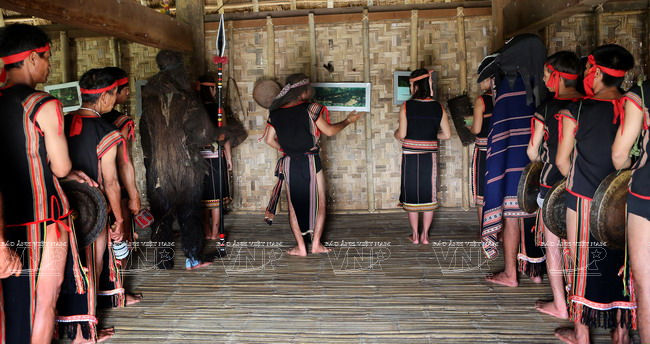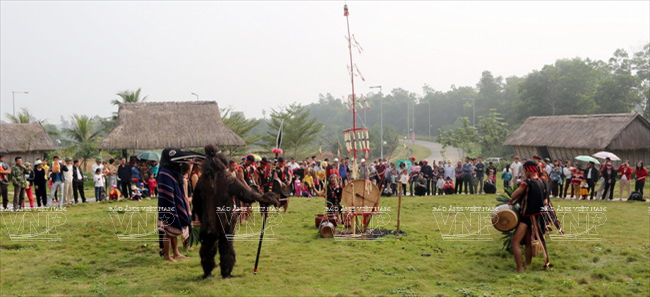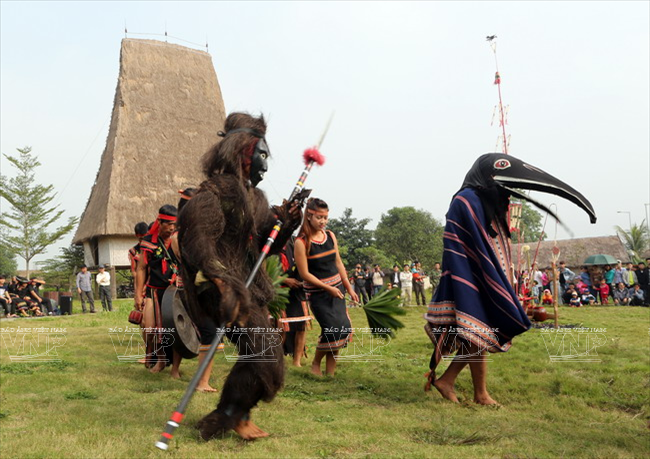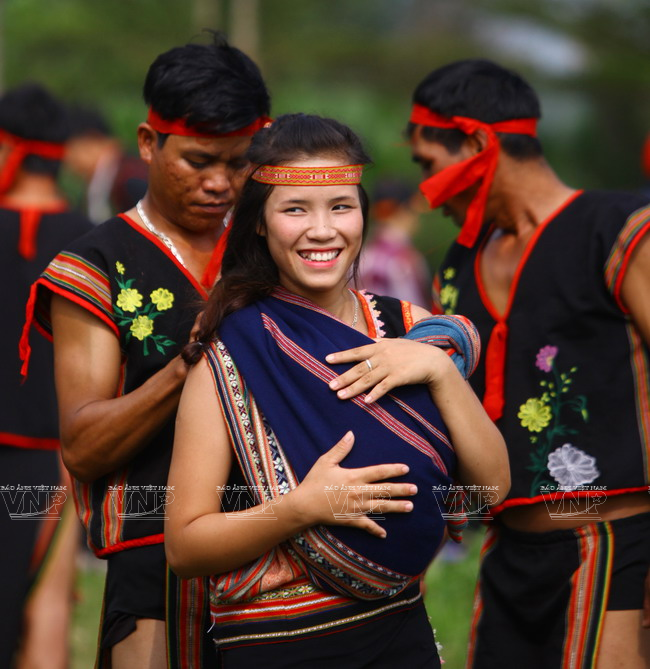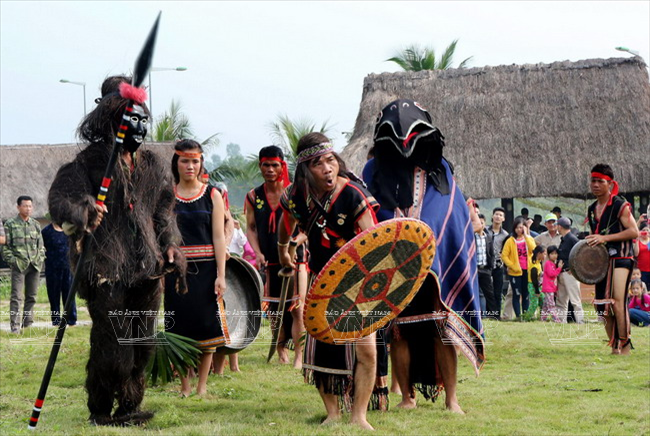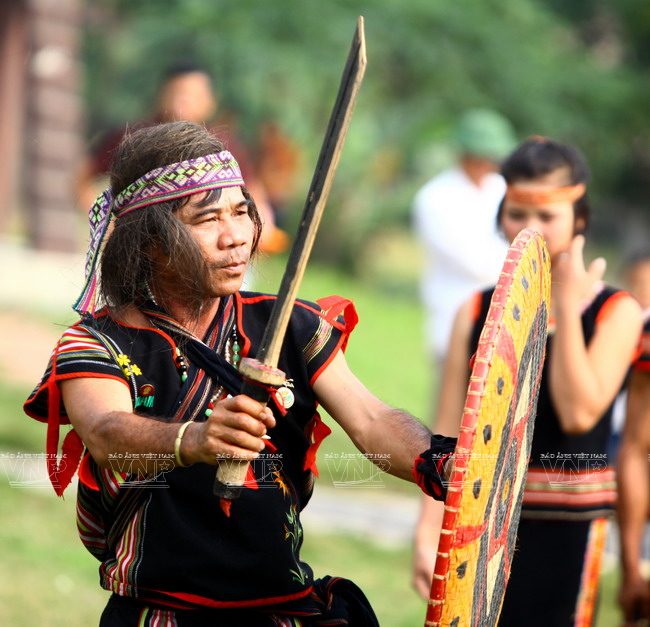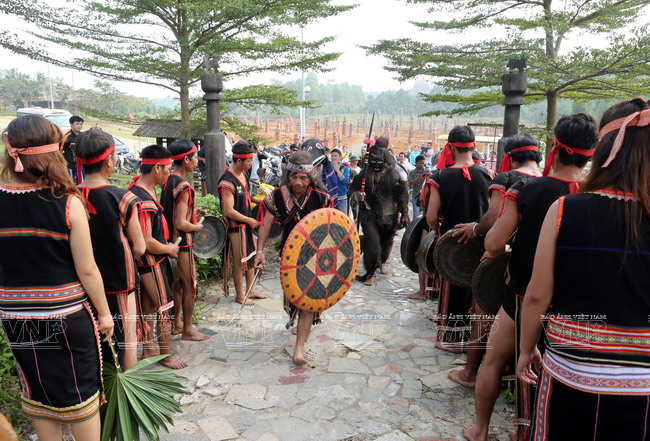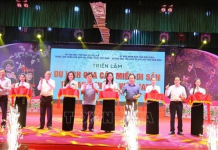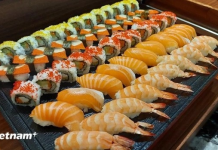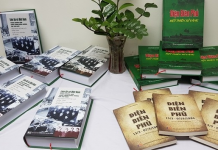According to elder A Thut in Ho Moong Commune, Sa Thay District, Kon Tum Province, this festival is known as Puh ho drih in the Ba Na language. To prepare for the festival, the villagers often clean and repair the hamlet’s road, the Rong house and the wharf. They also make four effigies which look like humans from fabric and bamboo. The hamlet’s patriarch selects some of the righteous and generous people in the village to participate in the ceremony
.
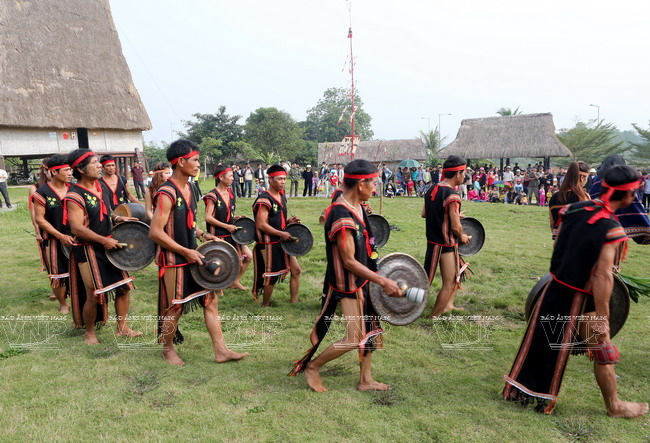 The festival of Ba Na ethnic people in Kon Tum Province is reproduced at the Culture-Tourism Village of Vietnamese ethnic groups in Dong Mo, Son Tay. 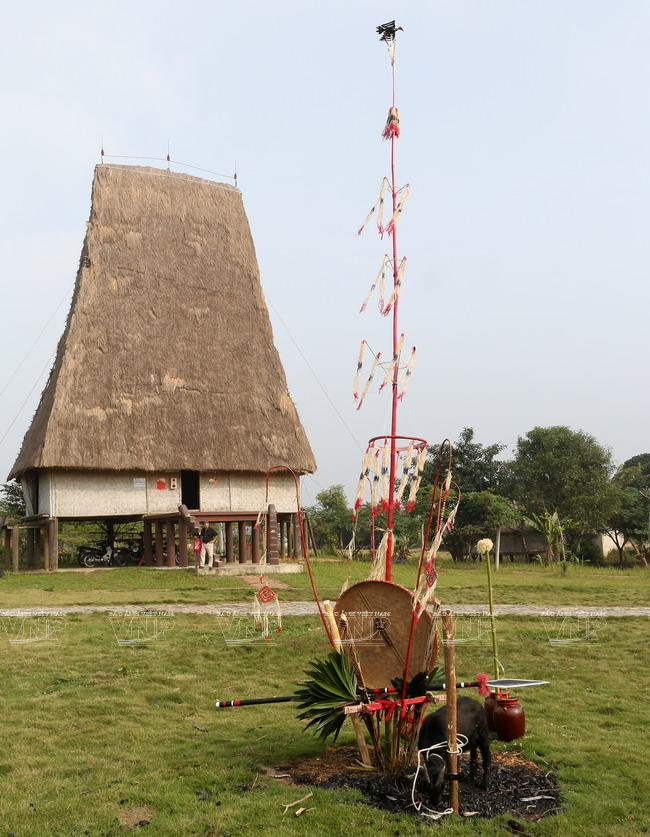 A Neu trees is planted in the front yard of the Rong house. 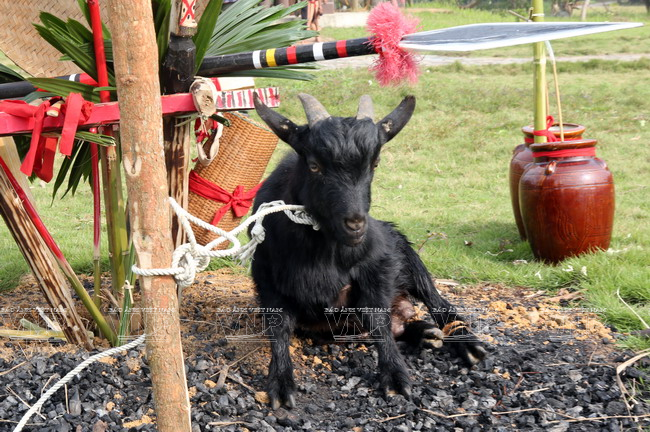 A goat is tied to the Neu tree as an offering to the deities. |
On festival day, the locals bring offerings, including a goat, to the Rong house where the worshiping rite is held. After the rite, the patriarch carries a shield and a sword and leads the procession around the village to drive away ghosts and sickness. The procession consists of four young men carrying the effigies, two girls, each holding a Dot tree, a team of gong players and the villagers.
The festival ends with the rite of inviting deities to enjoy the offerings and praying to them to protect the villages.

